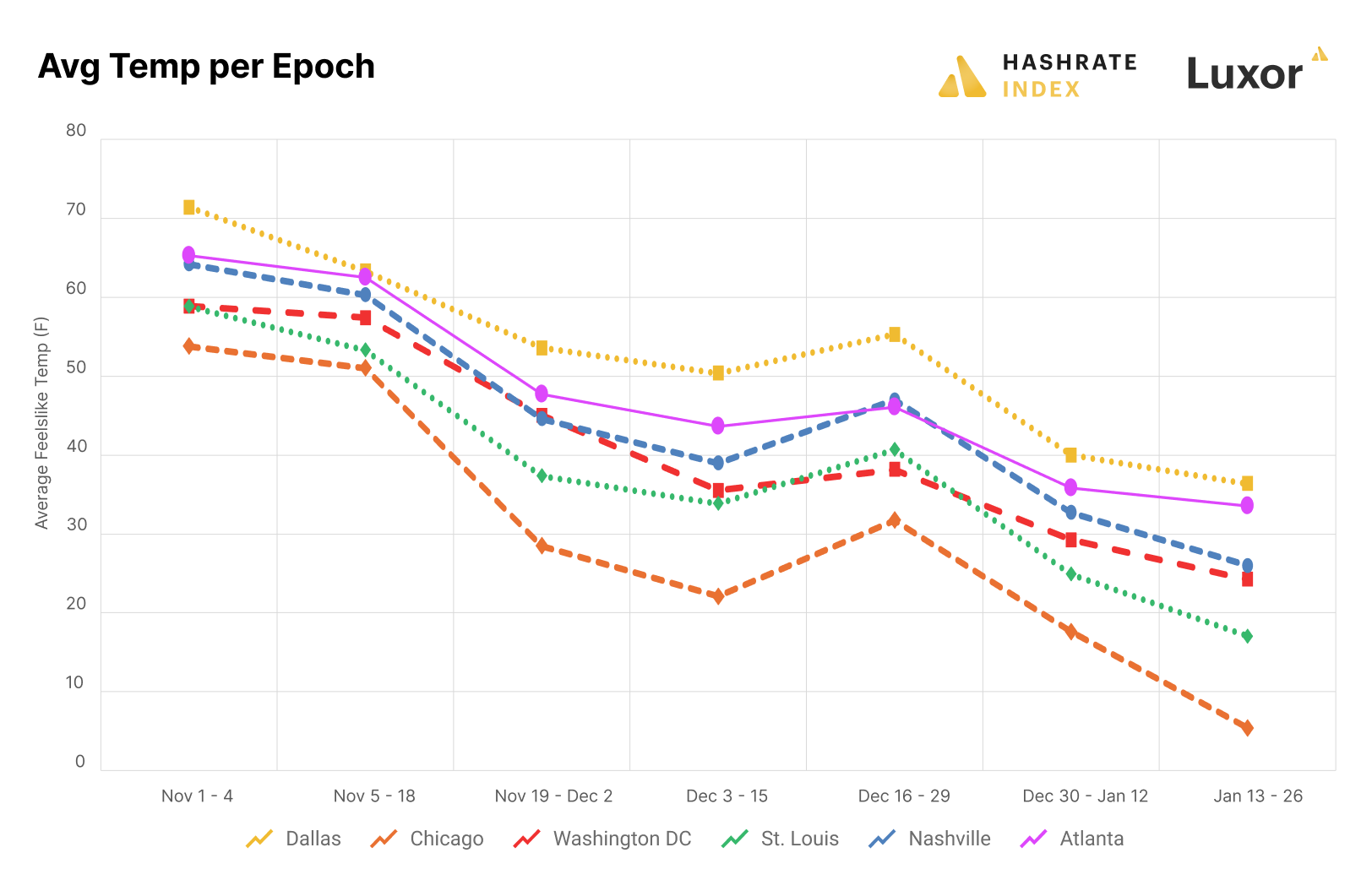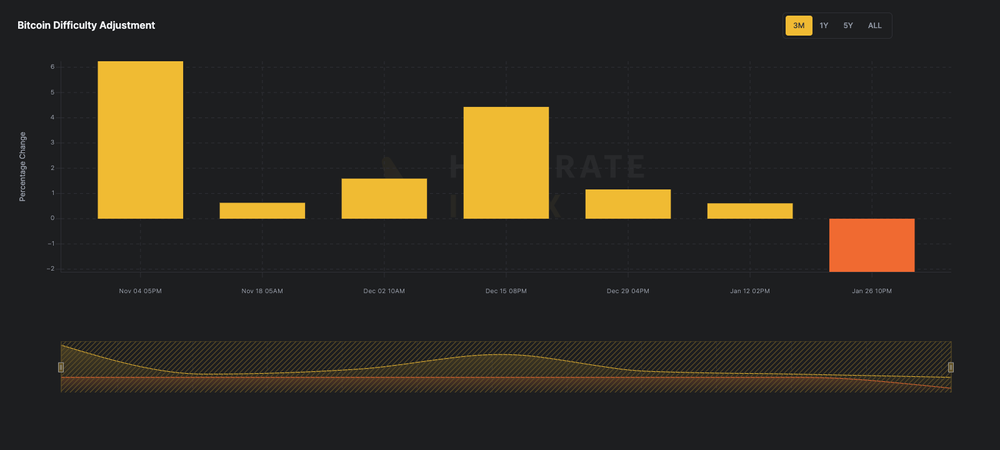
- The U.S. leads Bitcoin mining with 36% of the global hashrate, while Texas contributes 17%, but extreme weather disrupted operations.
- Texas miners face power outages due to extreme cold, leading to Bitcoin’s first negative difficulty adjustment in four months.
According to Luxor’s latest estimates, as of January 2025, the United States accounts for around 36% of the global Bitcoin mining hashrate. With Texas as one of the key contributors, this figure shows how the US keeps ruling the sector.
Texas accounts for around 17% of global Bitcoin mining, making it the top hub in the U.S. Miners flock there for cheap energy, ample resources, and supportive regulations. But the mining sector has suffered greatly from the recent severe storms that have passed the area.

On January 26, 2025, freezing temperatures pushed Bitcoin miners in Texas to slow down or shut off operations, triggering the first drop in mining difficulty in four months. The Bitcoin network automatically adjusts this difficulty based on how much computing power is available.

Basically, the more miners there are, the harder mining becomes. But if enough drop out, the difficulty eases. This time, a winter storm forced many miners offline, lowering hashrate. So, the Bitcoin network adjusted difficulty to keep block times close to 10 minutes.
Mining Gets Easier, but Weather Remains a Big Gamble
For miners, this is two-edged sword. On the one hand, the declining difficulty makes mining simpler, so raising their odds of return. On the other hand, operational interruptions brought on by harsh weather might result in losses, particularly for businesses mostly dependent on consistent energy.
For instance, Texas has had multiple instances of power disruptions in recent years because of severe storms. Since many miners depend on the state’s electricity supply, weather reliance is a problem in of itself.
Still, that is not everything. This event also emphasizes how delicate the crypto sector is to outside events. Should Texas—which makes around a fifth of the world’s total hashrate—have an outage, the effects would be felt worldwide. This underlines even more the need to spread mining sites to reduce related risks.
The Future of Bitcoin Mining in Texas
Texas is still a popular choice for Bitcoin miners in spite of climate difficulties. Some companies are adopting better systems to manage energy fluctuations caused by severe storms. For example, immersion cooling helps keep mining equipment at a stable temperature, even when weather conditions shift dramatically.
In order to lessen their reliance on the primary power grid, some mining firms also under consideration for switching to solar and wind energy sources. These steps not only boost resistance to severe storms but also assist to lower the carbon impact of the crypto mining sector.
Blockchain and Sustainable Energy: A Case Study of Petrobras
On the other hand, other industrial sectors are also embracing more sustainable methods of mining Bitcoin. As our prior report, one fascinating example comes from Brazilian energy corporation Petrobras, which runs Bitcoin mining operations on flared gas from oil extraction. This action intends to lower environmental impact and increase energy economy.
Petrobras is also collaborating with several research facilities to include blockchain technology in their activities, therefore helping to lower carbon emissions.






